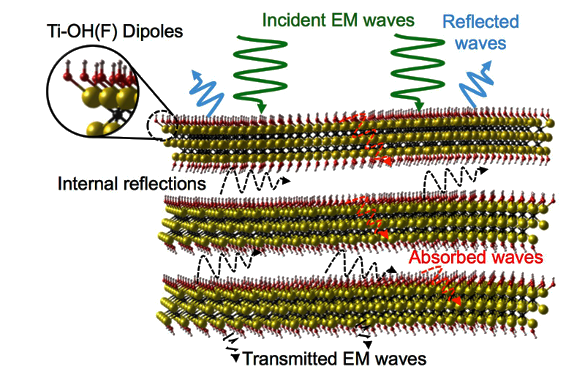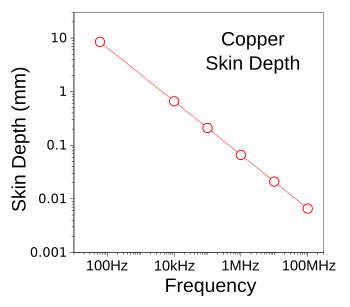Electromagnetic Shielding
October 17, 2016
Technology is driven by
consumer demand, and that's why
cellphones continue to evolve into the miraculous devices that we have today. It's said that the
Internet, and the previous technology of
video cassette players, advanced more quickly because of the demand for
pornography.
In the past, when endless
warfare was a way of life,
materials science was driven by the need for better
swords, and
shields as protection from them.
Prehistoric shields were made from
available materials, such as
wood and
animal hides, but they were
wrought from
metals as
metallurgy progressed (see figure).
Shortly after
radio waves were discovered, it was realized that it was sometimes necessary to
shield against them. Since an
electromagnetic wave is a combination of an
electric field and a
magnetic field, it can be
attenuated by shielding just one, or the other, of its components. The first effective shields
short-circuited the electric field component using a
Faraday cage, invented by
Michael Faraday in 1836. A Faraday cage is just a box formed from
conductive sheets or
wire mesh.
Faraday's
invention predated
Maxwell's electromagnetic theory of 1873 and the
generation and
detection of radio waves by
Heinrich Hertz in 1887. At its conception, the Faraday cage was designed to protect sensitive
electrical measurements from external
electric charge. After Faraday's time, the Faraday cage served as a shield for radio interference.
In most cases, you don't need that thick of a conductive material to have a Faraday cage. The well-known
skin effect describes the tendency of
alternating electric currents, such as those of radio waves, to have their highest
density at a conductor's
surface. Each conductor has a characteristic
skin depth at a given
frequency, and about two-thirds (1 - 1/
e) of electric currents are concentrated above that depth. The skin depth falls with frequency, and currents are attenuated to about 45
dBm below their surface values at ten skin depths.
Magnetic materials will act as electromagnetic shields, with their effectiveness
scaling as the
square root of the
permeability. Materials such as
nickel that are both electrically conductive and magnetic offer both types of shielding in a single material (see graph). Because of their high permeability and low
coercivity,
ferrite materials are more effective than other magnetic materials at high frequencies.
Since
wireless devices have migrated to higher frequencies to attain a wider transmission
bandwidth for higher
data rates, the electromagnetic shielding
mantra for the thickness of an effective shield has become, "
How low can you go?".
Scientists at the
Korea Institute of Science and Technology (Seoul, Republic of Korea), the
University of Science and Technology (Daejeon, Republic of Korea), and
Drexel University (Philadelphia, Pennsylvania), have developed a
nanomaterial, a
thin film of
titanium carbide of a class of materials known as
MXenes, that acts as an effective electromagnetic shield.[2-4] MXenes get their name from their similarity to
graphene, an
archetypal 2-D material, since they are
two-dimensional metal
carbides and
nitrides.[2]
As
Babak Anasori, a
research assistant professor at Drexel and a
co-author of the
paper describing this research, explains
"As technology evolves and electronics become lighter, faster and smaller, their electromagnetic interference increases dramatically... Internal electromagnetic noise coming from different electronic parts can have a serious effect on everyday devices such as cell phones, tablets and laptops, leading to malfunctions and overall degradation of the device."[3]
While conventional shielding is effective, most such shields are heavy, and we all want our cellphones to be as light as possible.
Aerospace electronics requires shielding as well, and weight reduction is a prime aerospace consideration. The MXene material can be combined with a polymer solution and used as a
spray coating to add shielding to
component cases.[3]
The research team tested MXene shields in a thickness range from several
micrometers up to 45 micrometers in order to assess the thinnest films capable of shielding.[3] They found that micrometer thickness MXene films compete with aluminum and copper foils; and, at 8 micrometers, the MXene shields block 99.9999% of radiation (40 dBm attenuation) at cellphone frequencies, performance that requires
millimeter thickness
carbon composite sheets.[3] A 45 μm MXene film of Ti
3C
2 exhibited 92 dBm attenuation at these frequencies.[2]
MXenes function so well as electromagnetic shields because of their high electrical conductivity (4600
siemens per
centimeter) and two-dimensional structure that allows a shield built from layers.[3] The layered structure allows multiple internal
reflections of the radiation, and these reflected waves are bounced around until they're
absorbed (see figure).[3] The
fundamental research of MXene properties was funded by the
National Science Foundation.[3]
 |
| Shielding principle of the MXene layered structure. The structure absorbs and traps electromagnetic radiation. (Drexel University image.) |
References:
- David S. Dixon and James V. Masi, "Composite material for EMI/EMP hardening protection in marine environments," US Patent No. 5,066,424, November 19, 1991.
- Faisal Shahzad, Mohamed Alhabeb, Christine B. Hatter, Babak Anasori, Soon Man Hong, Chong Min Koo1, and Yury Gogotsi, "Electromagnetic interference shielding with 2D transition metal carbides (MXenes)," Science, vol. 353, no. 6304 (September 9, 2016), pp. 1137-1140, DOI: 10.1126/science.aag2421.
- Containing Our 'Electromagnetic Pollution,' Drexel University Press Release, September 8, 2016.
- Drexel's MXene Helps Contain 'Electromagnetic Pollution,' Drexel University YouTube Video, September 8, 2016.
- Drexel University MXenes Web Page.





